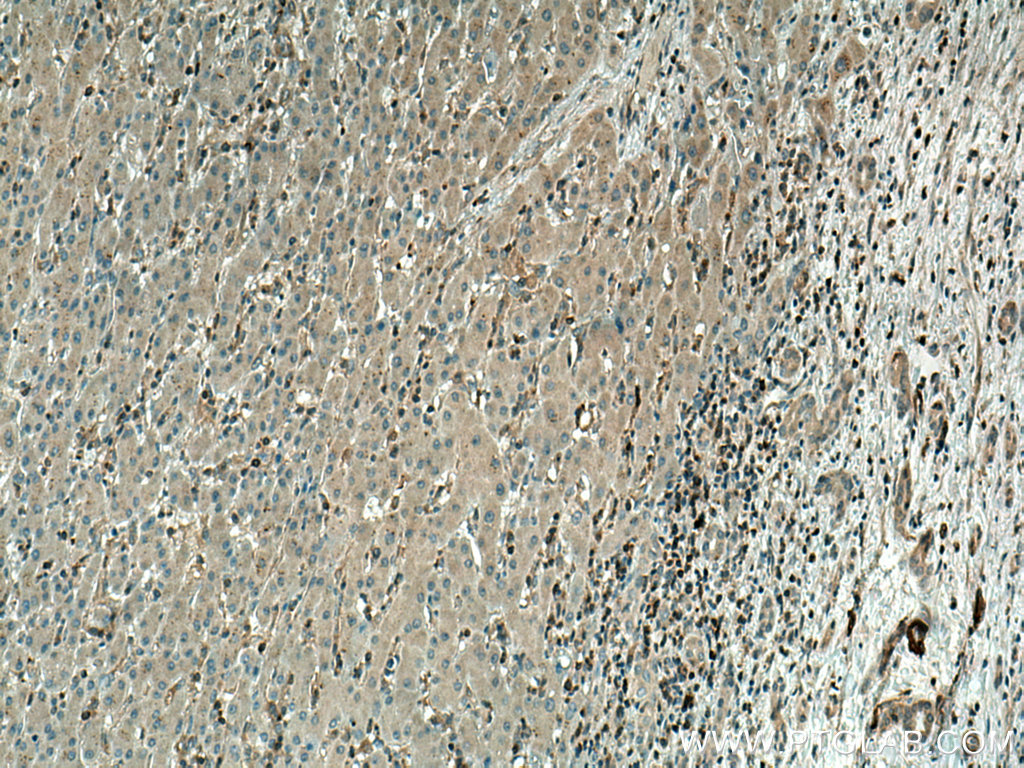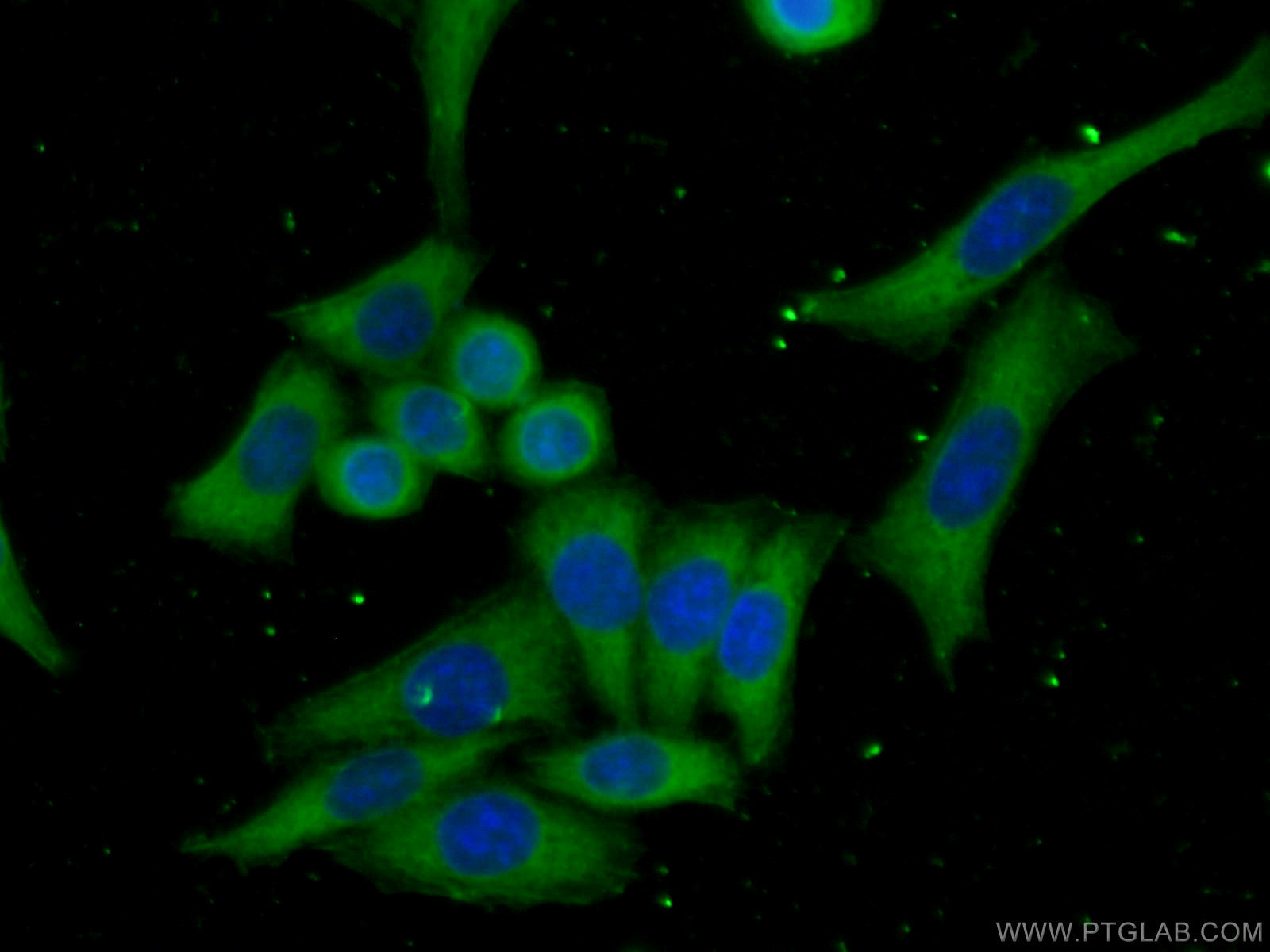验证数据展示
产品信息
67185-1-PBS targets Cytohesin 2 in WB, IHC, IF/ICC, Indirect ELISA applications and shows reactivity with Human, mouse, rat samples.
| 经测试应用 | WB, IHC, IF/ICC, Indirect ELISA Application Description |
| 经测试反应性 | Human, mouse, rat |
| 免疫原 |
CatNo: Ag21279 Product name: Recombinant human CYTH2 protein Source: e coli.-derived, PET28a Tag: 6*His Domain: 130-384 aa of BC004361 Sequence: VDLHEFTDLNLVQALRQFLWSFRLPGEAQKIDRMMEAFAQRYCLCNPGVFQSTDTCYVLSFAVIMLNTSLHNPNVRDKPGLERFVAMNRGINEGGDLPEELLRNLYDSIRNEPFKIPEDDGNDLTHTFFNPDREGWLLKLGGGRVKTWKRRWFILTDNCLYYFEYTTDKEPRGIIPLENLSIREVDDPRKPNCFELYIPNNKGQLIKACKTEADGRVVEGNHMVYRISAPTQEEKDEWIKSIQAAVSVDPFYEML 种属同源性预测 |
| 宿主/亚型 | Mouse / IgG2a |
| 抗体类别 | Monoclonal |
| 产品类型 | Antibody |
| 全称 | cytohesin 2 |
| 别名 | ARF exchange factor, ARNO, CTS18, CTS18.1, CYTH2, cytohesin 2, Protein ARNO, PSCD2, PSCD2L, SEC7L, Sec7p L, Sec7p like |
| 计算分子量 | 47 kDa |
| 观测分子量 | 47 kDa |
| GenBank蛋白编号 | BC004361 |
| 基因名称 | Cytohesin 2 |
| Gene ID (NCBI) | 9266 |
| RRID | AB_2882481 |
| 偶联类型 | Unconjugated |
| 形式 | Liquid |
| 纯化方式 | Protein A purification |
| UNIPROT ID | Q99418 |
| 储存缓冲液 | PBS only, pH 7.3. |
| 储存条件 | Store at -80°C. The product is shipped with ice packs. Upon receipt, store it immediately at -80°C |
背景介绍
Pleckstrin homology, Sec7 and coiled/coil domains 2 (PSCD2) is a member of the PSCD family. Members of this family have identical structural organization that consists of an N-terminal coiled-coil motif, a central Sec7 domain, and a C-terminal pleckstrin homology (PH) domain. The coiled-coil motif is involved in homodimerization, the Sec7 domain contains guanine-nucleotide exchange protein (GEP) activity, and the PH domain interacts with phospholipids and is responsible for association of PSCDs with membranes. Members of this family appear to mediate the regulation of protein sorting and membrane trafficking. PSCD2 exhibits GEP activity in vitro with small G proteins ARF1, ARF3, and ARF6.







